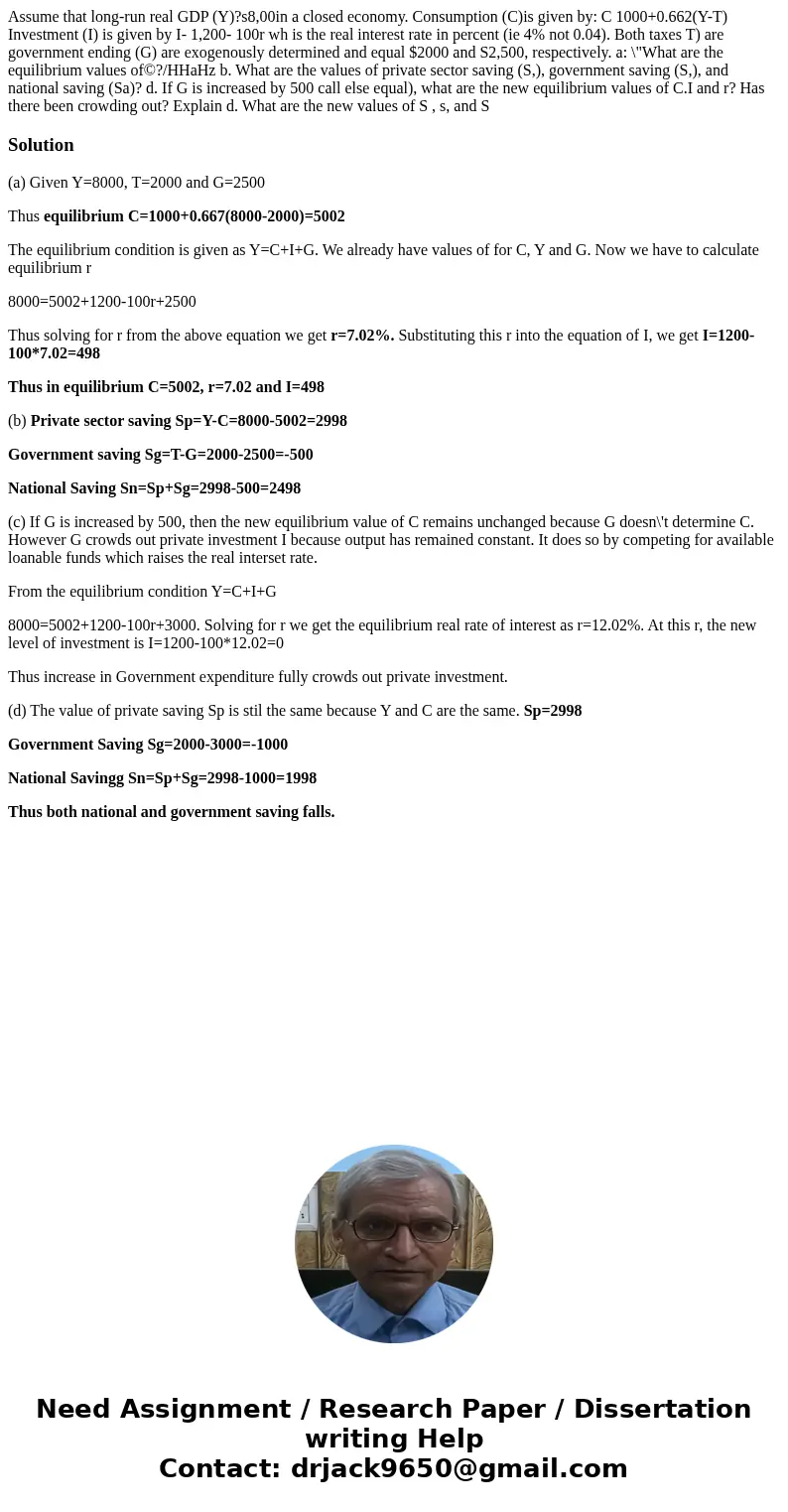Assume that longrun real GDP Ys800in a closed economy Consum
Solution
(a) Given Y=8000, T=2000 and G=2500
Thus equilibrium C=1000+0.667(8000-2000)=5002
The equilibrium condition is given as Y=C+I+G. We already have values of for C, Y and G. Now we have to calculate equilibrium r
8000=5002+1200-100r+2500
Thus solving for r from the above equation we get r=7.02%. Substituting this r into the equation of I, we get I=1200-100*7.02=498
Thus in equilibrium C=5002, r=7.02 and I=498
(b) Private sector saving Sp=Y-C=8000-5002=2998
Government saving Sg=T-G=2000-2500=-500
National Saving Sn=Sp+Sg=2998-500=2498
(c) If G is increased by 500, then the new equilibrium value of C remains unchanged because G doesn\'t determine C. However G crowds out private investment I because output has remained constant. It does so by competing for available loanable funds which raises the real interset rate.
From the equilibrium condition Y=C+I+G
8000=5002+1200-100r+3000. Solving for r we get the equilibrium real rate of interest as r=12.02%. At this r, the new level of investment is I=1200-100*12.02=0
Thus increase in Government expenditure fully crowds out private investment.
(d) The value of private saving Sp is stil the same because Y and C are the same. Sp=2998
Government Saving Sg=2000-3000=-1000
National Savingg Sn=Sp+Sg=2998-1000=1998
Thus both national and government saving falls.

 Homework Sourse
Homework Sourse